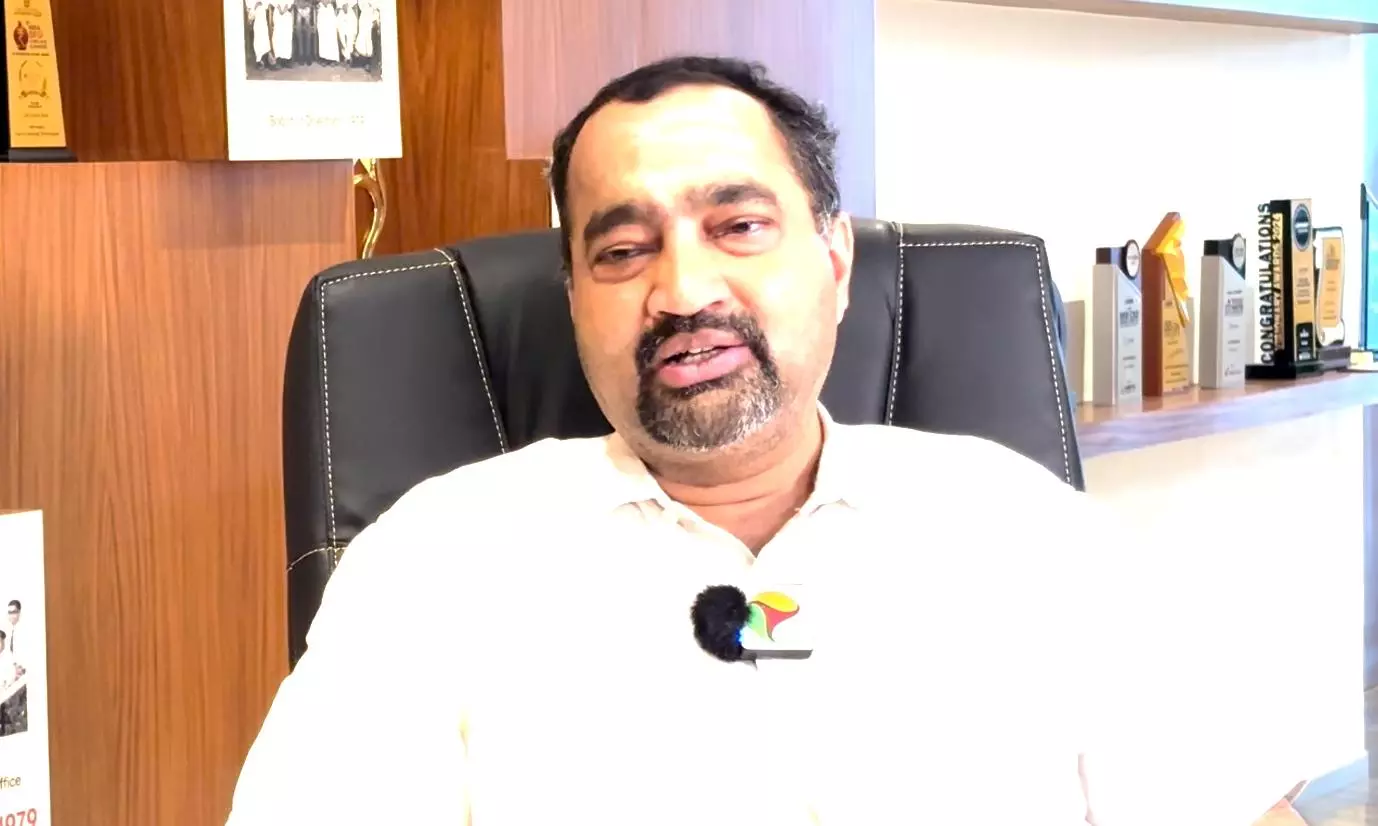
CUB will expand beyond TN, but we will retain our Tamil roots: Kamakodi
In a freewheeling chat, N Kamakodi, MD and CEO of private sector City Union Bank, talks about diversification plans, health of MSME sector, and his Budget expectations

N Kamakodi, MD and CEO of Kumbakonam, Tamil Nadu-based City Union Bank (CUB), spoke at length with The Federal about his expectations from the Union Budget, the outlook for FY25, improving banks' asset quality, and CUB's diversification and expansion plans. Edited excerpts:
How did CUB's collaboration with Boston Consulting Group (BCG), to enhance the bank’s technology through automation, turn out?
The initial phase of our project is complete, focusing on automating digital lending processes across multiple products. Our primary achievement has been in automating the MSME credit process. Starting with a credit limit of ₹3 crore, we have progressively increased it to ₹5 crore and now to ₹7.5 crore.
The data is sourced directly, enabling us to estimate loan amounts and verify CIBIL scores at ease. We've also successfully automated the bulk of Udyam registration for MSME proposals. Additionally, we've expanded into digital lending for housing loans, loans against property, and other categories.
Automation has significantly reduced turnaround times. Previously, processing could take up to two to three weeks; now, it's completed within two to three hours. Even tasks requiring manual intervention are swiftly managed within two days or so.
The bank’s loan book predominantly comprises MSMEs and agriculture. The personal loan segment, which again caters to your pre-existing customers within MSMEs, stands at 7 per cent. Is the bank planning to diversify?
Diversification is integral to effective risk management, necessitating a continuously evolving portfolio.
Presently, our focus is primarily on MSMEs, comprising approximately 20 per cent of our portfolio, alongside a substantial allocation to gold loans. We also prioritise regulatory retail sectors, ensuring diversity across both industries and geographical regions.
Up to now, our concentration has been on consumption sectors, with limited involvement in housing and other secured retail portfolios. However, our enhanced automation capabilities are facilitating our entry into these segments. We anticipate that within the next three years, these areas could comprise 7-10 per cent of our portfolio.
The bank has over 800 branches across the country but a significant portion operates within Tamil Nadu. Any plans for expansion into other regions?
We proudly trace our origins to the Cauvery basin, and proudly call ourselves a bank rooted in South India, particularly Tamil Nadu. With a legacy spanning 120 years in banking, we boast a track record that few in the world can match: continuous profitability and consistent dividend declarations.
Beginning our journey in the Cauvery delta in 1904, we expanded gradually to Chennai, Coimbatore, and extended our reach to Karnataka and Andhra Pradesh in the 1980s. Despite our substantial presence in South India, Tamil Nadu remains our stronghold, contributing nearly 70 per cent of our business.
Beyond South India, we have established a strong presence in the mofussil areas of Maharashtra, Gujarat, and even Rajasthan.
In Delhi and its surrounding areas, we operate around 10 branches. Currently, 75 per cent of our branches are located in Tamil Nadu. Looking ahead, we plan for at least 50 per cent of our incremental branch expansion to occur in non-Tamil Nadu states. While we may explore opportunities elsewhere, we remain committed to our roots because they define our identity and purpose.
What’s your outlook for FY25? Have you set any internal targets?
Our decade-long target aims for a consistent 15 per cent growth in both business and profitability. Despite temporary disruptions due to COVID, we have bounced back successfully and are now poised for double-digit profitability growth.
Historically, we have consistently exceeded industry growth rates by 2-3 per cent. We are steadily progressing towards reclaiming our established track record.
While the bank’s asset quality is improving, the provisions seem to have decreased. How do you see these metrics heading this fiscal year?
Our recovery from non-performing assets (NPAs) has been outpacing incremental slippages, leading to a reduction in our NPA figures. We anticipate that by the end of this financial year, we will have returned to pre-COVID NPA levels.
The Union Budget is round the corner. What are your expectations?
Over the past decade, a significant transformation has occurred in fiscal management, strengthening it in multiple ways.
The introduction of GST has formalised the economy, improving recovery mechanisms and reducing leakage. Unlike many developed countries that faced fiscal discipline challenges due to excessive spending, our country maintained fiscal discipline without resorting to excessive money printing.
Tax collection has been robust, helping to keep the deficit under control and maintain overall economic health. Currently, there are discussions about potential tax cuts, and it's crucial to strike a balance between tax collection and implementing tax cuts. Investment levels are yet to see a significant increase, and previous incentives are still awaiting results.
In the upcoming Budget, it's essential to take sufficient steps to boost economic activity while ensuring balanced growth expectations and benefits for the common man.
Considering the bank's current focus on the labour-intensive MSME sector, can you provide insights into the health of the sector?
During COVID, a significant portion of the MSME sector suffered losses, particularly those businesses that were non GST-compliant and relied solely on evaded taxes for profit margins. However, we are now observing improved asset quality and repayment rates across the sector.
Investment in the MSME sector has been sluggish. As economic health improves, businesses are expected to invest in capacity utilisation. Currently, capacity utilisation has surpassed pre-COVID levels and is nearing a point where surplus capacity could stimulate the investment cycle. The viability and repayment track record of surviving MSMEs are strong indicators. However, actual investments in the sector have yet to materialise.
This phase seems to mark a period of transformation. I anticipate significant growth in the MSME sector once capacity utilisation crosses the threshold for stimulating investment.

